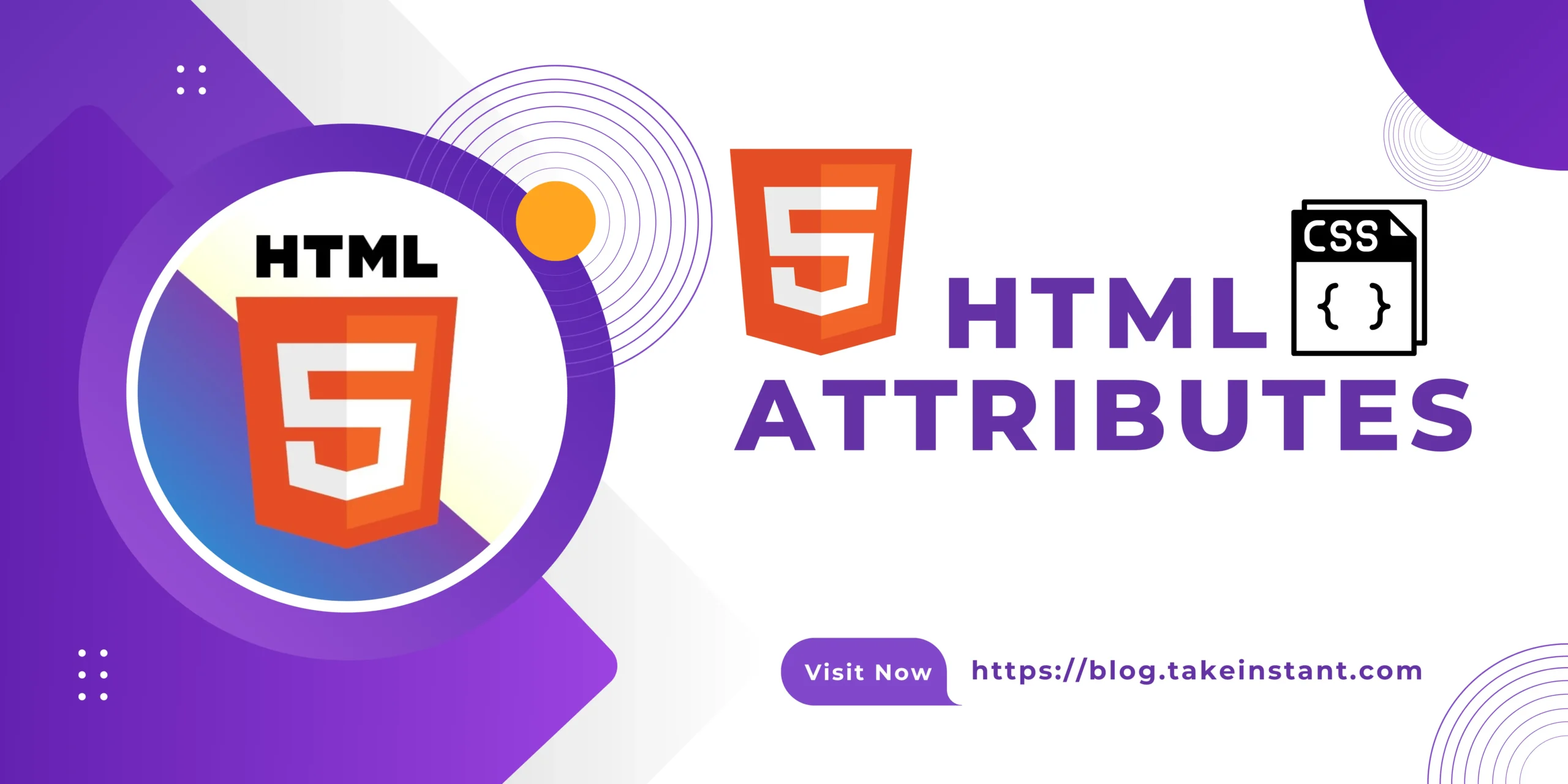HTML attributes are special words used inside the opening tag of an HTML element to control the element’s behavior or provide additional information about the element. Attributes are always included in the opening tag and usually consist of a name and a value, separated by an equal sign (=). The value is typically enclosed in double quotes ("), although single quotes (') can also be used.
Here are some common HTML attributes:
- Global Attributes: These can be used on any HTML element.
class: Specifies one or more class names for an element (used for CSS and JavaScript).id: Specifies a unique id for an element.style: Specifies an inline CSS style for an element.title: Provides additional information about the element (displayed as a tooltip).data-*: Used to store custom data private to the page or application.
- Specific Attributes: These are used for specific HTML elements.
- Anchor (
<a>):href: Specifies the URL of the page the link goes to.target: Specifies where to open the linked document.
- Image (
<img>):src: Specifies the path to the image.alt: Provides alternative text for the image if it cannot be displayed.widthandheight: Specifies the width and height of the image.
- Input (
<input>):type: Specifies the type of input element (e.g., text, password, submit).name: Specifies the name of the input element.value: Specifies the initial value of the input element.placeholder: Provides a short hint that describes the expected value of the input field.required: Specifies that an input field must be filled out before submitting the form.
- Form (
<form>):action: Specifies where to send the form data when the form is submitted.method: Specifies the HTTP method to use when sending form data (e.g., GET, POST).
- Event Attributes: These are used to trigger JavaScript code when certain events occur.
onclick: Script to be run when an element is clicked.onmouseover: Script to be run when the mouse pointer moves over an element.onchange: Script to be run when the value of an element is changed.
Example Usage
<!DOCTYPE html>
<html lang="en">
<head>
<meta charset="UTF-8">
<meta name="viewport" content="width=device-width, initial-scale=1.0">
<title>HTML Attributes Example</title>
</head>
<body>
<!-- Link with href and target attributes -->
<a href="https://www.example.com" target="_blank">Visit Example.com</a>
<!-- Image with src, alt, width, and height attributes -->
<img src="image.jpg" alt="Description of image" width="500" height="600">
<!-- Input field with type, name, value, placeholder, and required attributes -->
<form action="/submit-form" method="POST">
<input type="text" name="username" placeholder="Enter your username" required>
<input type="submit" value="Submit">
</form>
<!-- Div with class, id, style, and event attributes -->
<div id="uniqueDiv" class="container" style="color: blue;" onclick="alert('Div clicked!')">
Click me!
</div>
</body>
</html>Understanding HTML attributes is essential for web development as they provide the necessary details to make HTML elements function correctly and interact with CSS and JavaScript.


